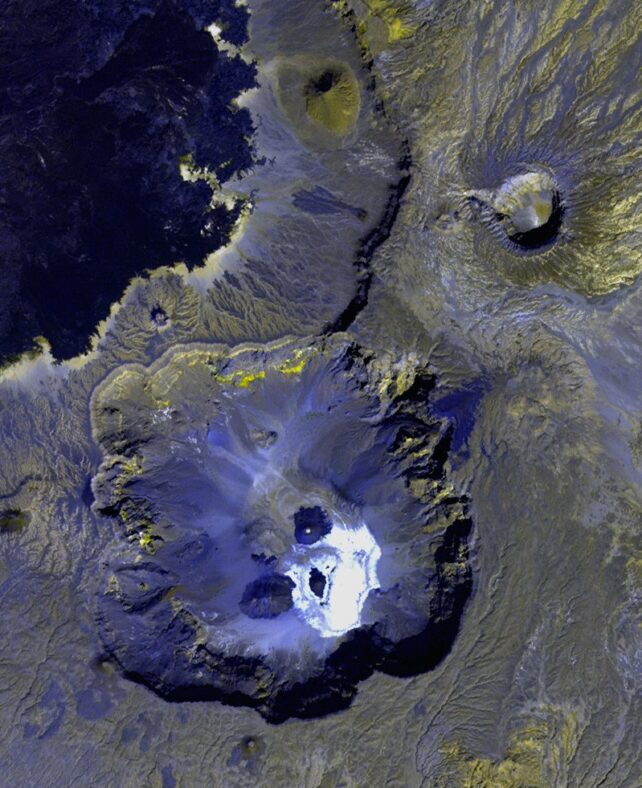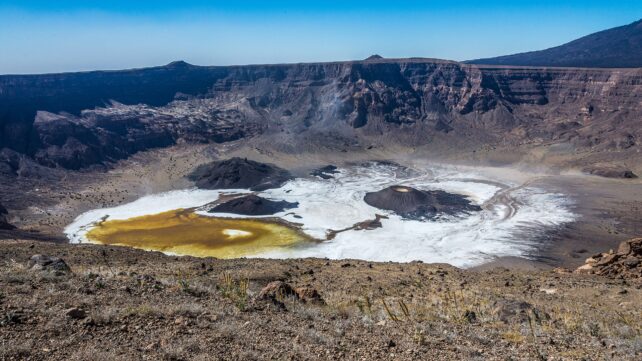The natural world has brewed up a spooky 'skull' in a deep volcanic pit in the Sahara Desert.
From space, the sight really does look like a ghostly apparition – a white face glowering from our planet's rocky skin.
 Satellite image of the eerie face. (NASA ASTER/Public Domain)
Satellite image of the eerie face. (NASA ASTER/Public Domain)The sinister sight is just a trick of the eye, but it's a real treat to behold.
Human eyes are drawn to finding faces in inanimate objects. It's a neurological bias scientists call 'pareidolia', and it's always a bit of extra fun if the face we catch a glimpse of is creepy.
Related: Here's Why We Tend to See Faces Everywhere We Look, According to Science
In this case, our planet has conjured up quite the countenance. The nightmarish face is formed by the Trou au Natron – an extinct volcano in Chad that is locally known as Doon Orei, which means "big hole".
True to its name, the caldera is up to 1,000 meters (3,300 feet) deep. Its white mask is the product of a 'soda lake', or crusts of a salt mixture known as natron (hence the caldera's name) formed from steaming vents and hot springs.
 Trou au Natron is a caldera, a volcanic crater formed from an explosive eruption. Viewed here from its rim, the 'face' doesn't seem so spooky. (Gerhard Holub/Wikimedia Commons/CC BY-SA 4.0)
Trou au Natron is a caldera, a volcanic crater formed from an explosive eruption. Viewed here from its rim, the 'face' doesn't seem so spooky. (Gerhard Holub/Wikimedia Commons/CC BY-SA 4.0)The face's bulging 'eyes' and 'nose' are cinder cones, which are conical hills formed around volcanic vents.
 The 'eyes' of the glowering face seen from the ground inside the caldera. (Alexios Niarchos/Wikimedia Commons/CC BY-SA 4.0.0)
The 'eyes' of the glowering face seen from the ground inside the caldera. (Alexios Niarchos/Wikimedia Commons/CC BY-SA 4.0.0)The Tibesti Mountains, where the caldera exists, are the highest ranges in the Sahara, but because they are extremely remote, scientists still don't know much about them.
Geoscientists only started studying the area in the 1960s. It's thought that this particular caldera was once filled by a glacial lake, about 14,000 years ago.
Now, it no longer reflects a starry night sky. It scowls at the abyss.

.jpg) 3 hours ago
3
3 hours ago
3

 English (US)
English (US)